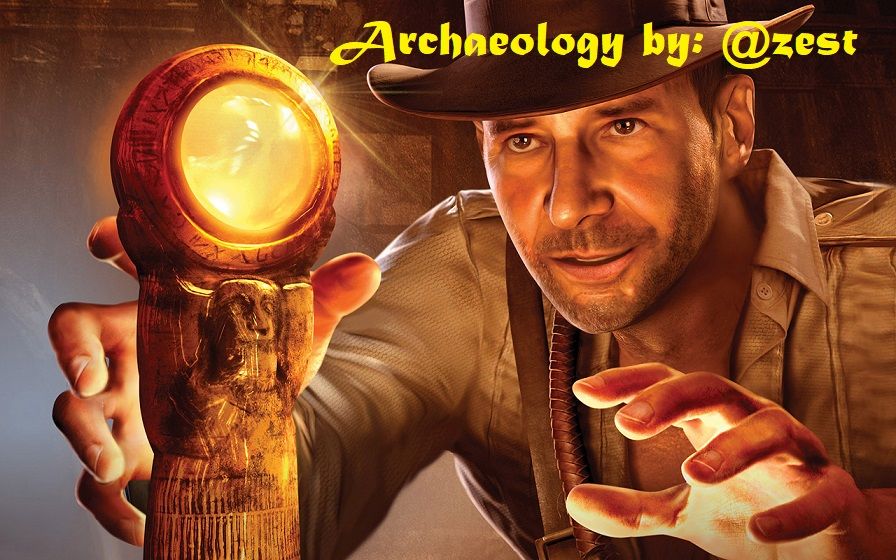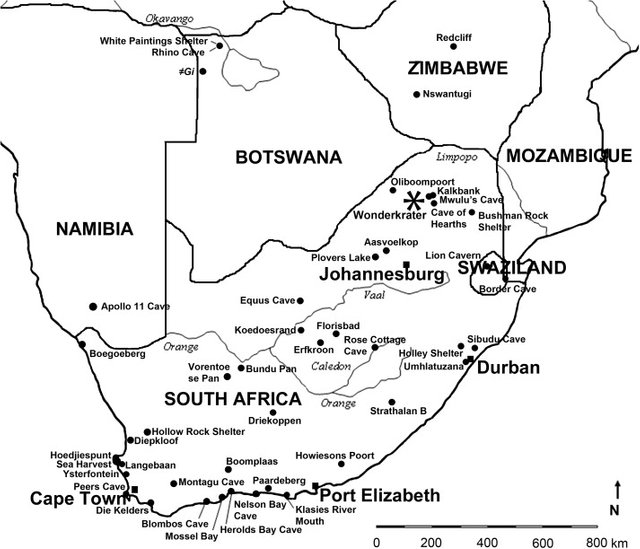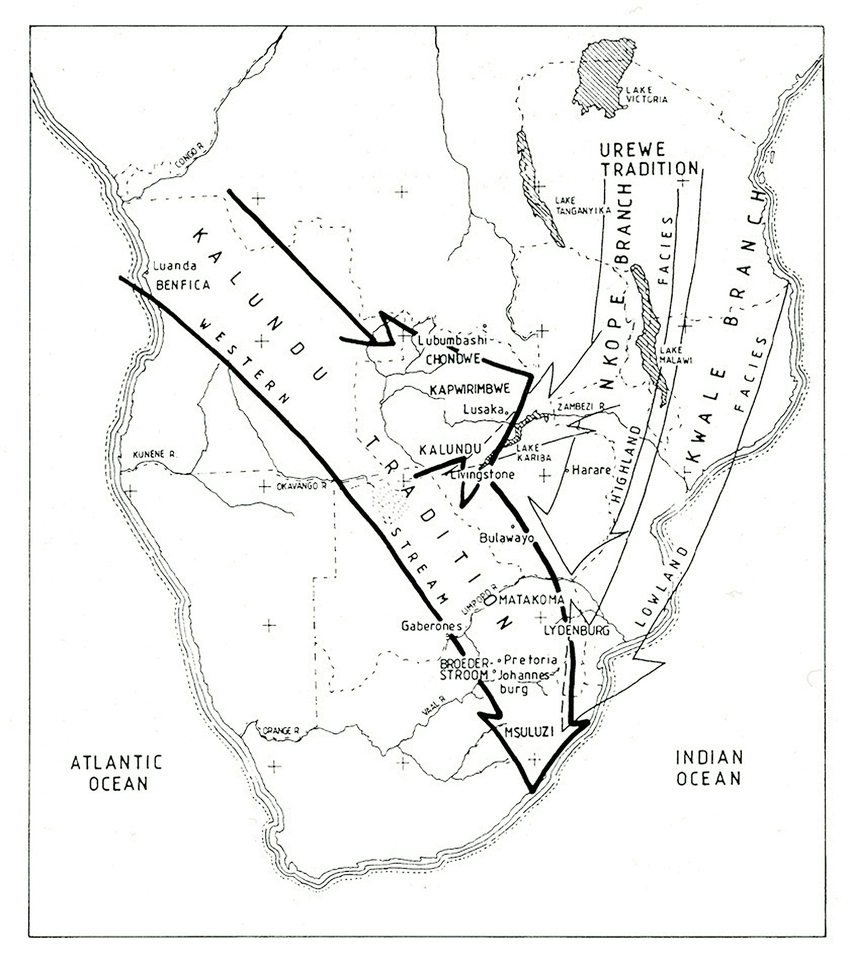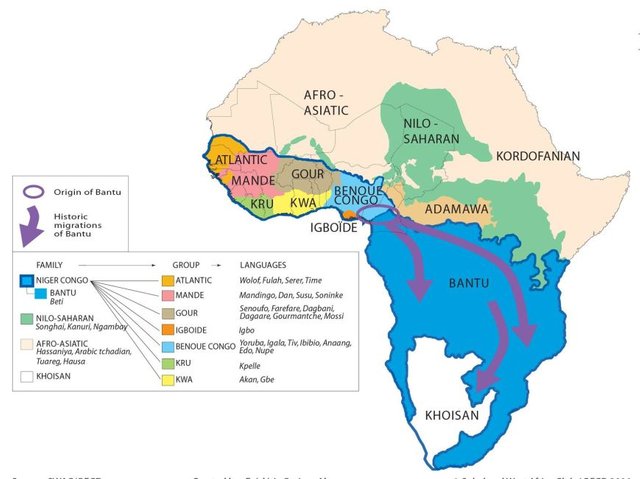The Early Iron Age of South Africa : The spread of the Early Iron Age Complex to southern Africa
The Early Iron Age of South Africa : The spread of the Early Iron Age Complex to southern Africa

Dear Reader
In this following series of posts we are covering the The Early Iron Age of South Africa, I highly encourage you to please read the Introduction and The Origins of the Early Iron Age Complex posts to this series to bring you update to date with the information and terminology we have covered so far.
The spread of the Early Iron Age Complex to southern Africa
During the 1980s, a major debate developed between David Phillipson and Tom Huffman about the spread of the Chifumbaze Complex to southern Africa. Both men associated the spread of the Early Iron Age Complex with population movements, but they disagreed on the composition and direction of the migratory streams. Their models were largely based upon an analysis of similarities and differences between the pottery of various Early Iron Age sites. This pottery is described by Ray Inskeep (1977:124) as follows:
In general terms Early Iron Age pottery tends to be thick, pale (pink, buff or reddish) in colour, and freely and boldly decorated.
Phillipson's views
According to Phillipson (1977 & 1993) the Early Iron Age Complex spread to the south in two streams, namely an eastern and western stream.
The western stream
The western stream is considered to be the result of a coalescence of two early Bantu-speaking groups in the region of the Lower Congo River. During the period 1000 - 200 BC one group moved directly southwards from Cameroon into that region, whilst the other group consisted of a section of Urewe pottery-makers who had spread westwards from the great lakes of East Africa to the Lower Congo River area during the period 300 - 100 BC.
From there the western stream of the Early Iron Age Complex spread into Angola, northern Namibia and parts of Zambia. Pottery traditions associated with the western stream include, among others, those from the Upper Lualaba River in Zaire, the Chondwe, Kapwirimbwe and Kalundu groups of Zambia, and the Kapako site in the north of Nambia (Phillipson 1977:128-139, 227-229).
The eastern stream
Phillipson (1977:229) infers that the remaining section of the Urewe pottery-makers (ie those who had not moved westwards into the Lower Congo area) formed the eastern stream.
During the period AD 100 - 200, part of this group first spread southwards and eastwards from the interlacustrine region to the section expanded southwards into southern Mozambique and the eastern and north-eastern parts of South Africa.
This so-called "lowland facies" of the eastern stream is represented by pottery from sites such as Kwale in Kenya, Matola in southern Mozambique and Silver Leaves near Tzaneen in the Limpopo Province of South Africa.
According to Phillipson (1977:230), the other section of the eastern stream spread southwards from the interlacustrine region in East Africa to south of Limpopo River during the period of about AD 300 - 400. Pottery collections that can be associated with so-called "highland division" of the eastern stream include those of Mwabulambo and Nkope in Malawi. Gokomere/Ziwa in Zimbabwe, Happy Rest in (Maktakoma) in the Soutpanberg, Limpopo Province, Sterkspruit near Lydenburg in Mpumalanga and several KwaZulu-Natal sites.
Re-evaluation of Phillipson's initial two-stream model
In response to criticism of his initial two-stream model, Phillipson has subsequently revised his views on the ceramic affinities of some of the more southerly Early Iron Age sites. In his most recent overview of the prehistory of Africa, he (Phillipson) acknowledges that some Chifumbaze sites in South Africa should probably be classified with the western rather than with the eastern stream. These sites include Sterkstroom near Lydenburg, as well as several Early Iron Age sites in KwaZulu-Natal.
Huffman's View
Phillipson's initial two-stream model (1977) was severely criticised by Huffman (1979) in particular. According to him, Phillipson's pottery classification were largely based upon unproven qualitative impressions, since Phillipson nowhere gave the diagnostic traits that assign a pottery group to a specific stream. Huffman (1979:233) therefore proposed a new stylistic classification of Early Iron Age ceramics, by means of which groups are distinguished on the basis of a combination of decorative motifs, decorative layout and vessel shape. Such a classification has led him to conclude that Early Iron Age groups entered southern Africa in three streams, eastern, a central and a western stream.
The eastern stream
Huffman's eastern stream of the Chifumbaze Complex largely corresponds with Phillipson's "coastal lowland facies" and is represented by the pottery from, among other places, Matola in Mozambique, Silver Leaves in the Limpopo Province and Mzonjani in KwaZulu-Natal. The origins of this stream, which had already reached the coast of Mozambique and KwaZulu-Natal by about AD 200, can, possibly, be traced back to the Kwale pottery of East Africa.
The central stream
The central stream is represented by Gokomere pottery, which appeared in Zimbabwe between AD 450-550. This central stream may be derived from the Ziwa pottery of northern-eastern Zimbabwe and the Nkope pottery from Malawi (Huffman 1979:237).
The western stream
The western stream is characterised by pottery from Bambata in Zimbabwe, Happy Rest in the Limpopo Province, Sterkspruit (Doornkop and the Lydenburg Heads site) in Mpumalanga, and NC3 sites (Msuluzi, Ndondondwane and Ntshekane) in KwaZulu-Natal, and probably represents a movement down from western Zambia and Angola (Huffman 1979:237). It is evident that several South African sites, which were formerly assigned to eastern stream by Phillipson (1977), are considered by Huffman to be part of the western stream.
Refinement of Huffman's initial three-stream
In his more recent publications, Huffman's (1989 a & b) has refined upon his earlier migration model. He retains Chifumbaze as an umbrella term for the Early Iron Age Complex. The term Urewe Tradition is used to denote the eastern stream, which is subdivided into the Nkope Branch (Phillipson's highland facies or Huffman's former central stream) and the Kwale Branch (the coastal or lowland facies). The western stream becomes the Kalundu Tradition, a name derived from an Early Iron Age site in Zambia. According to Huffman (1989b :74) a common ancestral phase of the western stream was discovered at Benfica, a few kilometres south of Luanda on the west coast of Angola. He also suggests that all the Early Iron Age units of South Africa, with the exception of the Matola/Silver Leaves group of sites (now including Broederstroom), should be assigned to the Kalundu Tradition. The distinction between the Urewe Tradition (eastern stream) and the Kalundu Tradition (western stream) is based primarily upon an analysis of ceramic style. These differences have been defined by James Denbow (1990:159) as follows:
Some of the characteristics that differentiate "western" from "eastern" stream ceramics south of the Okavango-Zambezi include the absence of thickened rims, a high frequency of comb-stamping in addition to incision, the presence of multiple and sometimes multiple-spaced bands of oblique hatching on pot necks, and a high frequency of herringbone, interlocking triangle, and vertical zig-zag motifs.
Gokomere in Zimbabwe, which was previously classified with the central stream, is now seen as a merger of the eastern stream Ziwa and a western stream unit (Huffman 1989b :65).
Hall's View
The two models referred to above both imply that the Early Iron Age Complex was introduced to South Africa through migration. In contrast, Martin Hall (1987:31) proposes an "incremental model for farming origins south of the Zambezi". Basically this means that the spread of a farming lifestyle to South Africa during the Early Iron Age occurred gradually and may not necessarily be attributed to a large-scale migration of Bantu-speaking people into southern Africa.
In Hall's view, the first farming communities entering South Africa did not necessarily prossess the complete "Iron Age package" or lifstyle. There is not enough proof to legitimate the claim that all the components of this "package" (ie a settled village, the manufacture of pottery, metallurgy, horticulture and animal husbandry) reached the south simultaneously. Hall also maintains that there is no clear-cut correlation between the distribution of Bantu languages and the spread of Iron Age ceramic styles. We do not, therefore, have to poist a large-scale migration of Bantu speakers who carried the "Iron Age package" to South Africa - the changes to people's way of life were probably the result of a combination of local movements by farmers seeking new fields and pastures and the adoption of new subsistence practices by the indigenous hunter-gatherers.
According to Hall (1987) there is still no agreement on the precise physical-anthropological identity of the Early Iron Age inhabitants of South Africa. There has been a shift away from the study of "races"; new research directions emphasise the study of the geographical distribution of individual genetic traits. The focus now is on "breeding populations", that is, the groups within which marriages often occur and which share a common gene pool. Research results based on this new approach indicate that there is no grounds for claiming that a "Stone Age" race was replaced during a migration which coincided with the spread of new languages, economies and technologies to the south. It would appear that some of the genetic markers that are characteristic of the South African gene pool were present much earlier, judging by skeletal remains from the south (rather than those from the north); this, too, casts doubt on the migration theory, which claims that new physical types of human beings were introduced from the north. Huffman (1982:138), on the other hand, states unequivocally that the few Early Iron Age skeletons from Zimbabwe and South Africa all display clearly new physical features, whereas the Later Stone Age skeletal remains can be assigned to the "Khoisan" physical type.
Images are linked to their sources in their description and references are stated within the text.
Thank you for reading
Thank you @foundation for this amazing SteemSTEM gif







Thanks a lot for the education! Excellent quality post again.
I'm always fascinated by the subject, namaste :)
Hi @eric-boucher!!
I am once again truly humbled and appreciative of your gracious comment and support:)
Namaste:)
So to conclude: we don't know exactly what happened. We just have different ideas that all have pros and cons (okay two are very similar, IMO). Is that correct?
PS: My two cents concerning the style: I was trying to put things on a global Africa map directly at the beginning of the post, when you were describing the first migration streams. And the map came after, with the second migration pattern. Maybe would it be good to put a map first? This would have been helpful for me (but of course this is subjective :p)
Hey @lemouth!!!!
You are correct, there is no consensus currently to prove the exact movement but I feel with the DNA analysis currently being conducted by MIT and Havard we will soon be able to track the exact movements of the migrations:)
I totally get what you mean about the map placement, and I have moved it to the suggested spot:)
Thank you sincerely for the comment and support:)
And thanks to you for taking my comment so nicely ;)
Great post and interesting read. Hopefully one day the 'clues' will all come together
Fingers crossed we will be able to hopefully join all the dots soon.
Thank you for the comment and support:)
Brilliant
Thank you:)
Great read, didn't realise there would be content like this on steemit. Definitely following for some more - you've given me some inspiration for history article, thanks legend
Thank you for the comment and support. I would like to invite to join the SteemSTEM chatroom, there are plenty of authors that you would enjoy:)
https://steemit.chat/channel/steemSTEM
will do !
Thanks for the information. I learned something from reading this post. The Bantu migrations are an aspect of African history that I'd like to learn more about. Do you think there are any correlations between what's written here and the numerous complexes of stone structures that people have written about recently? I'm not sure if they are stone age or iron age however.
I'm following for the information
Hi @brainlewis :)
I would strongly suggest to please read my earlier posts leading up to this point when you do have some free time available. I think that some of my articles might help answer some of the questions you have in mind:)
Thank you for the comment and support:)
Brilliant